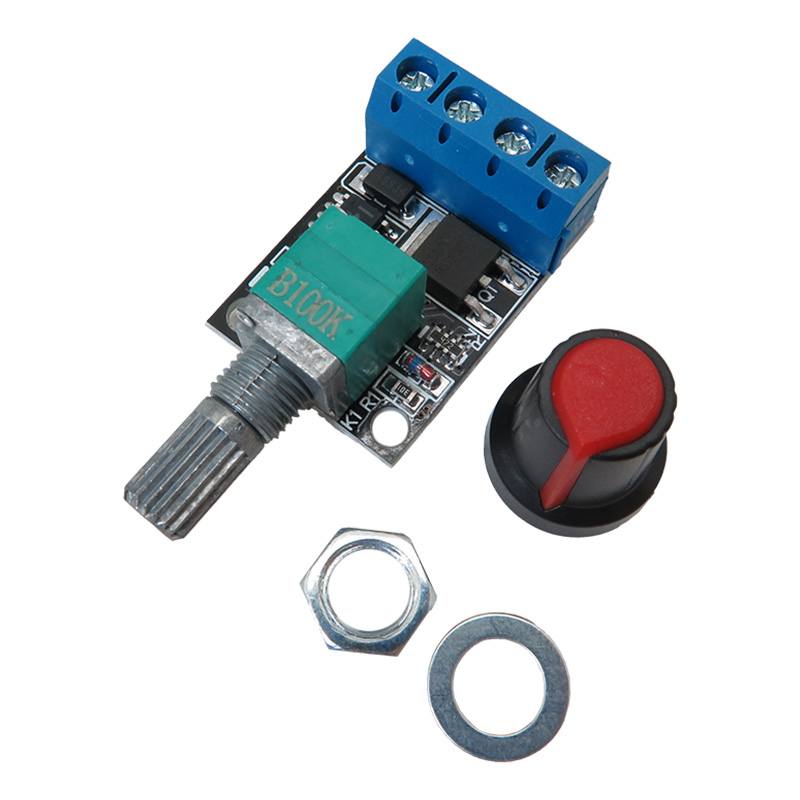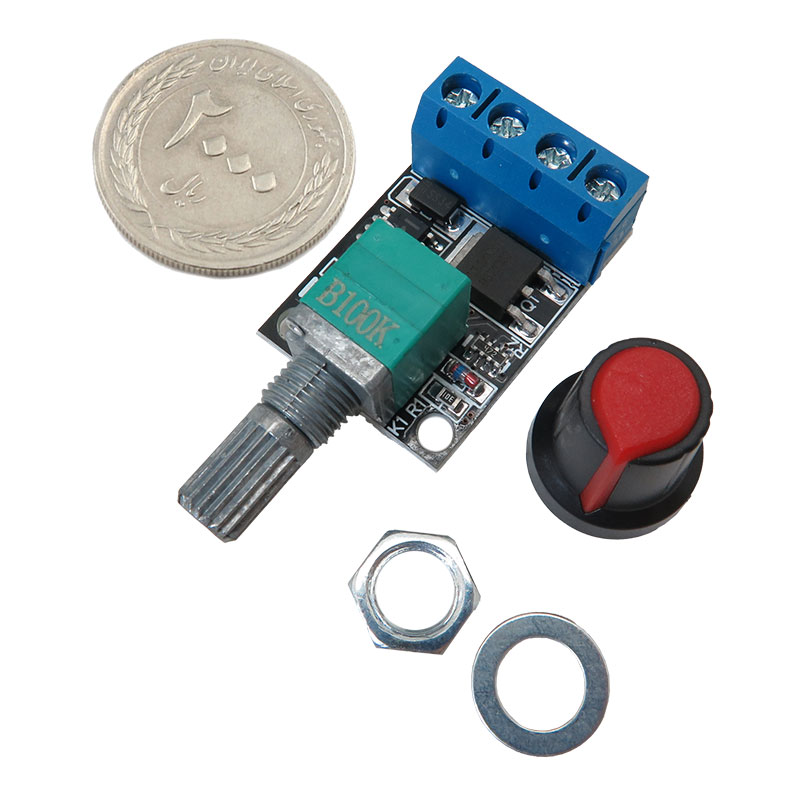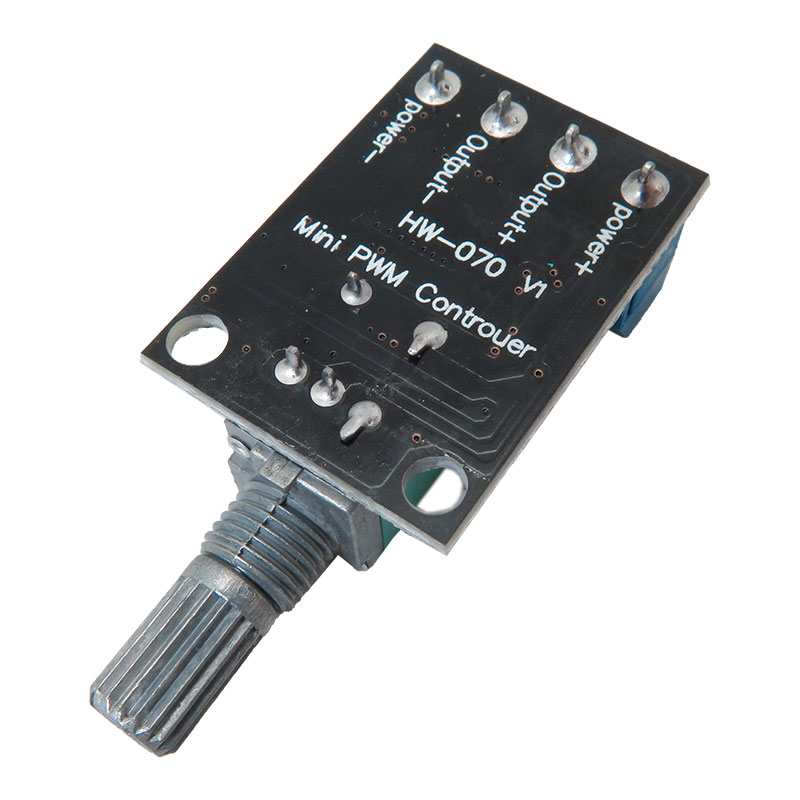54,820 تومان
در حال حاضر موجود نمی باشد
موجودی در حال ارسال به انبار
-
250 عدد1404/07/16
علاقه مندان : 3 نفر
وضعیت : فعال
تعداد مرجوعی : 0
دنبال کنندگان : 6 نفر
قدمت : 3 سال و 5 ماه و 2 روز
وزن : 13 گرم
کل فروش : 605 عدد
تعداد سفارش ها : 113 سفارش
1 از 5.0 با 1 رای
ماژول کنترل دور PWM ولتاژ 5 تا 16 ولت 10 آمپر
کنترل دور و سرعت موتورهای الکتریکی، امری مهم و پرکاربرد در صنایع مختلف است. به وسیله کنترل دور موتورها، می توانید توان آن را متناسب با نیاز، تغییر دهید. همچنین، با افزایش و کاهش دور موتور در شرایط مختلف، می توانید سرعت انتقال اجسام را کنترل کنید.
این ماژول کنترل دور PWM موتور دی سی 10 آمپر دارای ولتاژ کاری 6 تا 15 ولت DC است که تراشه NE555 دارد و با ایجاد پالس PWM، خروجی را کنترل می نماید.
جریان زمان روشن شدن این ماژول حدود 2 میلی آمپر است و نیاز به خاموش کردن ماژول در طولانی مدت نیست.
بر روی ماژول کنترل دور PWM ولتاژ 5 تا 16 ولت 10 آمپر ترمینال های پیچی جهت اتصال ورودی ولتاژ تغذیه و کابل های موتور تعبیه شده است و کافیست کابل های موتور و تغذیه، متصل شوند و سپس به کمک ولوم روی ماژول، می توانید دور موتور را کنترل نمایید.
کاربرد ماژول کنترلر PWM 10A:
- کنترلر دور موتور دی سی
- کنترلر سرعت فن
- کنترلر نور
- منبع تغذیه قابل تغییر دی سی
- منبع تغذیه رگولاتور دی سی
مشخصات ماژول کنترلر PWM 10A:
- حداکثر ولتاژ: 16 ولت
- حداقل ولتاژ: 5 ولت
- جریان: 10 آمپر
- جریان حداکثر اتصال کوتاه: 20 آمپر
- چرخه کار ( Duty cycle ) : 0 تا 99 درصد
- جریان لحظه راه اندازی: 2 میلی آمپر
- بازدهی حداکثر تا 98 درصد
Description:
Pulse Width Modulator, or PWM for short. Because of its special performance, it is often used as a lamp dimming in a DC loop or a DC motor speed control. This circuit is a motor controller made using the principle of pulse width modulation (PWM). Using this method to control the motor speed has advantages.
It mainly changes the duty cycle of the output square wave to change the average on-time on the load from 0-100% to achieve the purpose of adjusting the brightness/speed of the load. The advantage of using pulse width modulation (PWM) to achieve dimming/speed regulation is that the energy of the power supply can be fully utilized and the efficiency of the circuit is high. This engine speed control switch can control the engine speed from 0%-99%. It is widely used in industrial production. Comes with a button to control the speed of the motor.
This PWM DC motor Speed controller has input voltage in range of 5 to 16V dc, with maximum output current of 10A.
Application:
DC Motor Speed Controller
DC Fan Motor Speed Controller
DC LED Light Dimmer
Adjustable DC Power Supply
DC Regulator Power Supply
Features:
Maximum voltage: 16V
Minimum voltage: 5V
Continuous current: 10A
Short circuit maximum current: 20A (less than 10 seconds)
Speed control mode: PWM stepless speed regulation, can also be used to adjust the light
Control mode: speed control potentiometer (open clockwise, continue to rotate clockwise from 1% to 99% speed)
Duty cycle: 0%-99% (0% position is the leftmost closed state of the potentiometer)
When the current is turned on, 0.002A (no need to turn off the governor for a long time, there will be no current)
Efficiency: The highest efficiency is up to 98%
Weight: 10 grams


